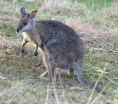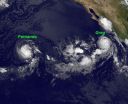(Press-News.org) PITTSBURGH—Science educators aim to nurture, enrich and sustain children's natural and spontaneous interest in scientific knowledge using many different approaches. In a new paper published in "Science," Carnegie Mellon University's David Klahr and Jamie Jirout and Illinois State University's Corinne Zimmerman use psychology research to outline ways to advance the science of science instruction.
"Instead of looking at this issue from a science education perspective, we looked at it from a cognitive and developmental psychology perspective," said Klahr, the Walter van Dyke Bingham Professor of Cognitive Development and Education Sciences at CMU. "And from our point of view, it's clear that you can't understand how to teach unless you understand how children learn."
For the paper, Klahr and his colleagues reviewed literature on the early development of scientific thinking and then focused on recent research on how to best teach science to children from preschool to middle school. They characterized scientific thinking in terms of two features: content, which includes an array of domain-specific topics such as feedback; and processes, including formulation of hypotheses and designing experiments.
"When you're looking at how children should be taught, the instructional methods should be consistent with their cognitive capacity," Klahr said. "Children can get lost with too much open-ended instruction with too little structure. On the other hand, too much structure can get boring. There needs to be a fine balance between both."
Another problem Klahr and his team identified was in the way science educators classify their classroom instruction using global terms that are not clearly defined and therefore not uniformly used. The research team introduced a method for clearly describing the type of instruction used that covers aspect, materials, goal setting, physical manipulation of materials by child, design of each experiment, probe questions, explanations, summary, execution of experiments and observation of outcomes.
"Instruction labels don't matter — it's what actually happened in the classroom that matters," Klahr said. "Using clear descriptive explanations of what happens in the classroom are the only way to make advances in science education."
The team also advocates for increased use of intelligent tutors in science education. An example given is TED, which has successfully helped children learn how to design experiments. The tutor looks at mistakes that are made and asks questions to train the children on how to create a solid experiment.
###
For more information on Klahr and his science education research, visit http://www.psy.cmu.edu/people/klahr.html.
Carnegie Mellon researchers outline ways to advance scientific thinking in children
2011-08-19
ELSE PRESS RELEASES FROM THIS DATE:
Fudging in greenhouse gas stats?
2011-08-19
This release is available in German.
International agreements such as the Kyoto Protocol to reduce greenhouse gases (GHG) basically have one snag: it is almost impossible to independently verify whether participating countries abide by the agreement. Thus the evaluation of whether or not the countries have achieved their reduction targets is based on the official reports by the countries that are signatories to the UNFCCC ('United Nations Framework Convention on Climate Change'). If they report reduced emissions they're sitting pretty; if not, they are pilloried.
This ...
Football analysis leads to advance in artificial intelligence
2011-08-19
CORVALLIS, Ore. – Computer scientists in the field of artificial intelligence have made an important advance that blends computer vision, machine learning and automated planning, and created a new system that may improve everything from factory efficiency to airport operation or nursing care.
And it's based on watching the Oregon State University Beavers play football.
The idea is for a computer to observe a complex operation, learn how to do it, and then optimize those operations or accomplish other related tasks. In this project, the goal is for the computer to watch ...
UM researcher develops successful prevention program for postpartum OCD
2011-08-19
CORAL GABLES, FL (August 18, 2011) — The birth of a baby can elicit many emotions, from joy and excitement to fear and uncertainty. But it can also trigger unexpected difficulties with anxiety, in particular with postpartum Obsessive Compulsive Disorder (OCD). Psychologist Kiara Timpano from the University of Miami (UM) and her collaborators developed an effective program for the prevention of postpartum obsessive compulsive symptoms. The findings are reported online ahead of print by the Journal of Psychiatric Research.
"Postpartum depression has received much attention, ...
Research finds Greenland glacier melting faster than expected
2011-08-19
A key glacier in Greenland is melting faster than previously expected, according to findings by a team of academics, including Dr Edward Hanna from University of Sheffield.
Dr Hanna, from the University of Sheffield's Department of Geography, was part of a team of researchers that also included Dr Sebastian Mernild from the Los Alamos Laboratory, USA, and Professor Niels Tvis Knudsen from the University of Aarhus, Denmark. The team's new findings present crucial insight into the effects of climate change.
The researchers found that Greenland's longest-observed glacier, ...
SUNY Downstate researchers identify possible new targets for treating pain in women
2011-08-19
Women and men experience pain, particularly chronic pain, very differently. The ability of some opioids to relieve pain also differs between women and men. While it has been recognized since the mid-nineties that some narcotic analgesics are more effective in women than men, the reason for this difference was largely unknown.
Narcotic analgesics decrease pain by activating opioid receptors, which are located on nerves that transmit painful sensations. Since levels of mu, delta, and kappa opiate receptors—the three main types of opioid receptor in the brain and spinal ...
The first kangaroo genome sequence
2011-08-19
Kangaroos form an important niche in the tree of life, but until now their DNA had never been sequenced. In an article newly published in BioMed Central's open access journal Genome Biology, an international consortium of researchers present the first kangaroo genome sequence – that of the tammar wallaby species – and find hidden in their data the gene that may well be responsible for the kangaroo's characteristic hop.
"The tammar wallaby sequencing project has provided us with many possibilities for understanding how marsupials are so different to us," says Prof Marilyn ...
Researchers investigate muscle-building effect of protein beverages for athletes
2011-08-19
Physical activity requires strong, healthy muscles. Fortunately, when people exercise on a regular basis, their muscles experience a continuous cycle of muscle breakdown (during exercise) and compensatory remodeling and growth (especially with weightlifting). Athletes have long experimented with methods to augment these physiologic responses to enhance muscle growth. One such ergogenic aid that has gained recent popularity is the use of high-quality, high-protein beverages during and after exercise, with dairy-based drinks enriched with whey proteins often taking front ...
NYU Langone researchers reveal a new mechanism of genomic instability
2011-08-19
NEW YORK, August 18, 2011 – Researchers at NYU School of Medicine have discovered the cellular mechanisms that normally generate chromosomal breaks in bacteria such as E. coli. The study's findings are published in the August 18 issue of the journal Cell.
"This study provides a new explanation on how bacteria generate mutations and adapt to stressors like antibiotics. The study is quite unusual as it touches on several different fields of molecular biology at the same time: replication, transcription, translation and DNA repair," said Evgeny Nudler, PhD, The Julie Wilson ...
DOE laboratories help develop promising new cancer fighting drug, vemurafenib
2011-08-19
DOE Laboratories Help Develop Promising New Cancer Fighting Drug, Vemurafenib
Powerful X-Rays Enable Development of Successful Treatment for Melanoma and Other Life-Threatening Diseases
WASHINGTON, DC – Powerful X-ray technology developed at the U.S. Department of Energy's (DOE's) national laboratories is revealing new insights into diseases ranging from Alzheimer's to the swine flu, and, most recently, enabled the discovery of a groundbreaking new drug treatment for malignant melanoma, the deadliest form of skin cancer. The drug, Zelboraf (vemurafenib), received ...
NASA satellite data confirms Greg a hurricane, Fernanda a tropical storm
2011-08-19
Big sisters don't like being overshadowed by their younger brothers and that's what has happened in the eastern Pacific Ocean with Tropical Storm Fernanda and now Hurricane Greg. Despite the difference in strength, NASA satellite imagery shows some strong convection happening in both tropical cyclones and that they're now matched in size.
Greg grew into a hurricane today is it continues moving near the western coast of Mexico, while Fernanda has maintained tropical storm strength.
The Geostationary Operational Environmental Satellite called GOES-11 caught an image of ...


